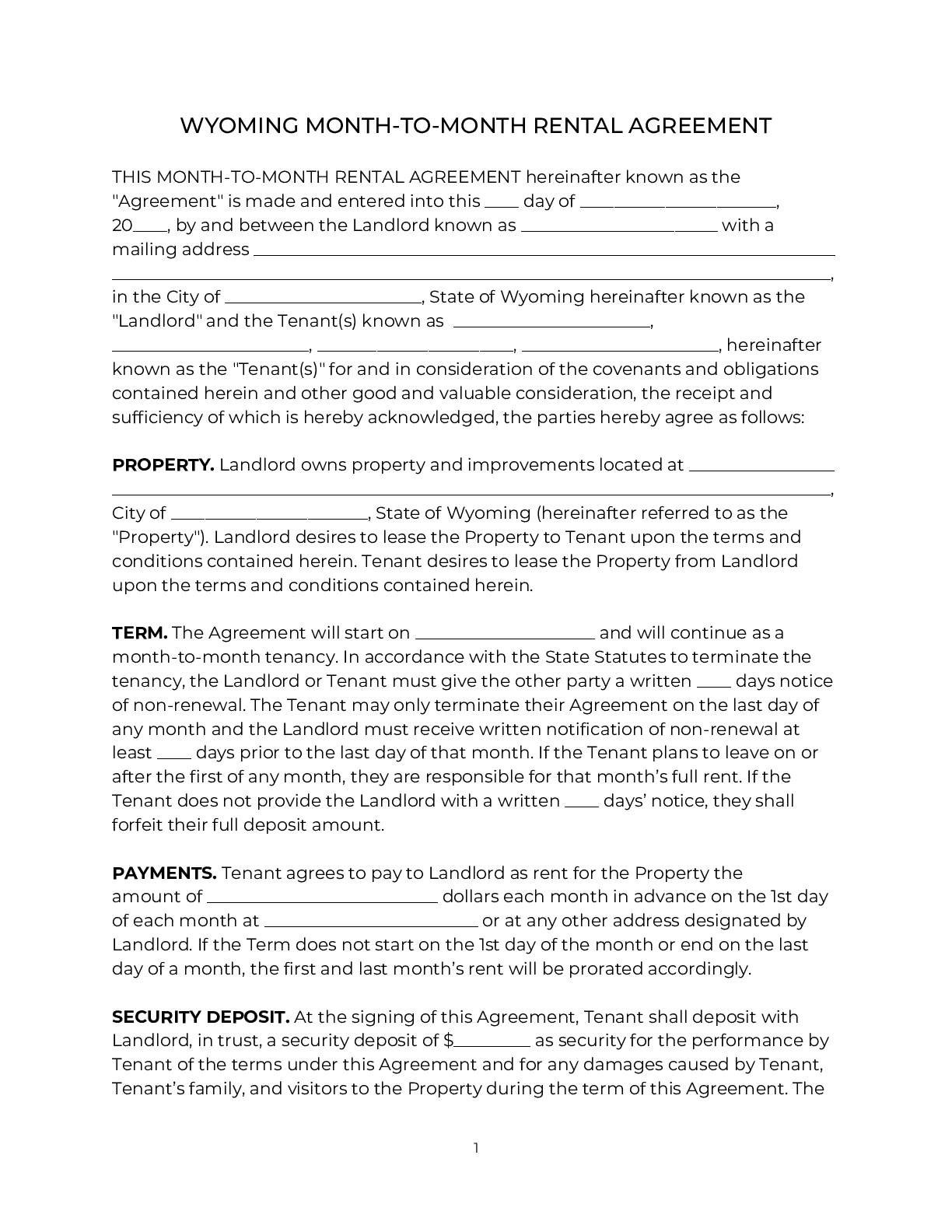A Wyoming rental agreement is a legal contract between a landlord overseeing a rental property and a tenant using the property. Wyoming landlord-tenant law governs and regulates these agreements.
Wyoming Rental Agreement Types
A Wyoming roommate agreement is a legal contract between two or more people (“co-tenants”) who share a rental property according to rules they set, including for things like splitting the rent. This agreement binds the co-tenants living together, and doesn’t include the landlord.
Wyoming Required Residential Lease Disclosures
- Non-Refundable Fees (required for some leases) – Any non-refundable fees charged during the lease term must be disclosed and agreed in the lease. The tenant may otherwise be legally entitled to a refund.
- Lead-Based Paint Disclosure (required for some leases) – Landlords must provide an EPA-approved disclosure and informational pamphlet to tenants renting any property built before 1978.
To learn more about required disclosures in Wyoming, click here.
Wyoming Landlord Tenant Laws
- Warranty of Habitability – Wyoming has more flexible habitability and repair standards than many other states. Landlords only have to repair major health and safety issues. They can take a non-specific “reasonable” time (usually interpreted by courts as fewer than 30 days) to perform repairs. When a landlord doesn’t repair after proper notice, a tenant can sue, but can’t repair and deduct, withhold rent, or (typically) terminate the lease.
- Evictions – When evicting a tenant for non-payment of rent, violating a lease term, or committing a crime, a Wyoming landlord must provide a 3-day notice. This makes evictions fast in Wyoming; many take place in just a few days, and it’s uncommon for an eviction to take more than a month.
- Security Deposits – Wyoming does not limit the amount of a security deposit. When the lease ends, the landlord must return any unused portion of a tenant’s deposit within 30 days of lease end, or within 15 days after receiving of the tenant’s forwarding address.
- Lease Termination – Wyoming does not require tenant notice before terminating a month-to-month lease. Terminating a fixed-term lease early usually requires active military duty, uninhabitable property, domestic violence, or landlord harassment, which allow early termination of a fixed-term lease.
- Rent Increases and Fees – Wyoming doesn’t limit the amount or timing of a rent increase. Likewise, there’s no cap on maximum late fees. Bounced check fees are limited to $30.
- Landlord Entry – Wyoming doesn’t set specific rules for landlord entry. Terms of entry usually get negotiated in the lease. If the lease is silent, the landlord can enter at reasonable times (by custom, with at least 24 hours of advance notice) for reasonable business purposes (repairs, inspections, etc.), plus entry as necessary in emergencies.
- Settling Legal Disputes – Wyoming lets small claims courts hear landlord-tenant disputes, as long as the value in controversy is under $6,000. Small claims isn’t allowed to hear eviction cases.
To learn more about landlord tenant laws in Wyoming, click here.
Sources
- 1 Wyo. Stat. § 1-1-115(a)
-
Any person who issues a check which is not paid because the check has been dishonored for any reason has thirty (30) days following the date of a written demand mailed to the drawer of the check by United States postal service certificate of mailing at the address shown on the check or his last known address or personally served pursuant to the Wyoming Rules of Civil Procedure, to pay to the holder of the check the amount of the check and a collection fee not to exceed thirty dollars ($30.00). The demand shall state that the drawer is required to pay the value of the check and the collection fee demanded and shall state the collection fee provided for in this section.
Source Link








